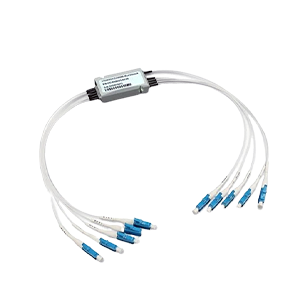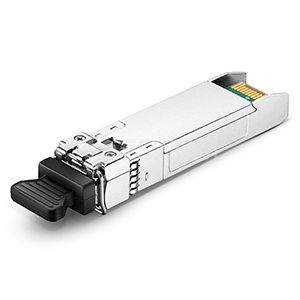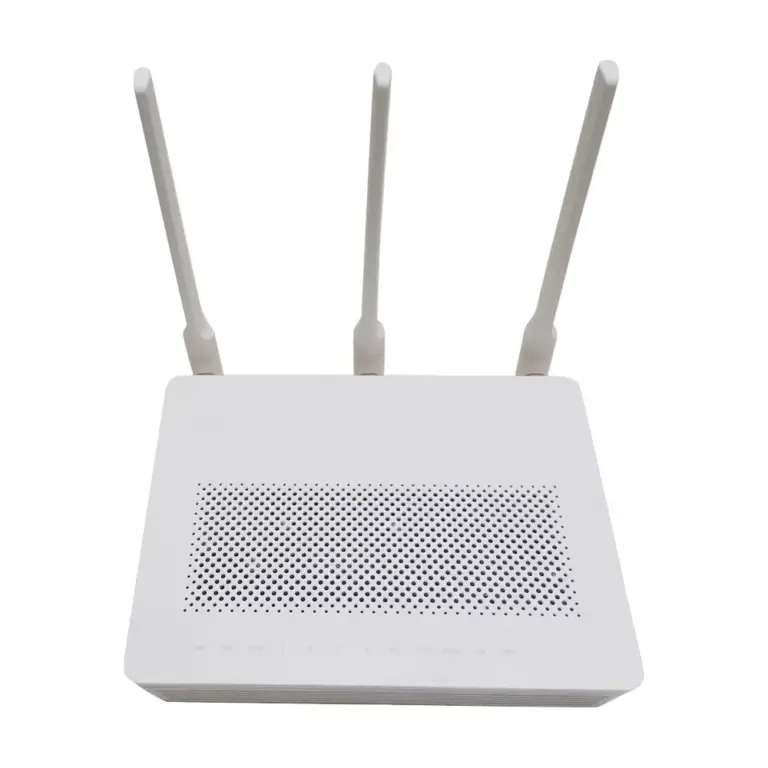I am pleased to introduce you to the 1000BASE-LX optical module, a high-performance optical module for Gigabit Ethernet. The 1000BASE-LX optical module uses photoelectric conversion technology to convert optical signals into electrical signals or electrical signals into optical signals to achieve reliable data transmission.
It uses a fiber wavelength of 1310 nanometers and can typically support transmission distances of up to 10 kilometers. 1000BASE-LX optical module has excellent transmission rate and anti-interference ability, and is suitable for applications requiring high bandwidth and stability. It is mainly used in data centers and enterprise networks for connections between servers, storage area networks (SAN), and connections between floors.
When deploying and configuring 1000BASE-LX optical modules, ensure proper fiber connections and network device settings for optimal performance. In the future, with the further development of high-density packaging technology and optical fiber networks, 1000BASE-LX optical modules will continue to evolve to meet the growing demand.
Introduction to 1000BASE-LX optical module
Definition and background:
1000BASE-LX is an optical module for Gigabit Ethernet, usually used for fiber optic transmission. It is a physical layer specification defined in the IEEE 802.3 standard and is used for long-distance optical fiber transmission in Gigabit Ethernet.
The 1000BASE-LX optical module originated from the development of Gigabit Ethernet and is designed to solve the needs of long-distance transmission. It provides a reliable and high-speed solution for network environments that need to cover longer distances.
Transmission distance and wavelength:
1000BASE-LX optical modules usually use 1310 nanometer fiber wavelength for transmission. This wavelength range exhibits lower attenuation and better transmission performance in optical fiber transmission.
Regarding transmission distance, the 1000BASE-LX optical module can support transmission distances up to tens of kilometers. The specific transmission distance depends on the type of optical fiber used and other transmission conditions. Generally, when using single-mode fiber (Single-Mode Fiber, SMF), the 1000BASE-LX optical module can achieve long-distance transmission, while when using multi-mode fiber (Multi-Mode Fiber, MMF), the transmission distance will be relatively short.
It should be noted that in order to ensure the stability and performance of optical fiber transmission, the appropriate optical fiber type and other network equipment need to be matched when using the 1000BASE-LX optical module.
Working principle of 1000BASE-LX optical module
Photoelectric conversion:
The 1000BASE-LX optical module realizes conversion between optical signals and electrical signals through photoelectric conversion. When the optical module at the sending end receives an electrical signal, it converts the electrical signal into an optical signal and transmits it through the optical fiber. When the optical signal reaches the optical module at the receiving end, it converts the optical signal back into an electrical signal.
At the sending end, the photoelectric conversion process is as follows:
- The optical module at the sending end receives the electrical signal.
- The electrical signal passes through the electronic drive circuit and drives the laser (or light-emitting diode) to generate the corresponding optical signal.
- The optical signal passes through the modulation circuit and the light intensity is modulated according to the transmitted data.
- The modulated optical signal is launched into the optical fiber through the transmitter (Transmitter).
At the receiving end, the photoelectric conversion process is as follows:
- The optical module at the receiving end receives the optical signal.
- The optical signal passes through the receiver (Receiver), and the photosensitive element (such as a photodiode or photodetector) converts the optical signal into a corresponding electrical signal.
- The received electrical signal is amplified by the amplifier circuit.
- The amplified electrical signal passes through the demodulation circuit to restore the original digital data signal.
Optical fiber transmission:
1000BASE-LX optical module uses optical fiber for signal transmission. Optical fiber is a slender glass or plastic material with a high refractive index that transmits optical signals to a target location through the reflection of light.
In fiber optic transmission, optical signals maintain their transmission through refraction and reflection within the fiber. When an optical signal enters the optical fiber from the transmitting end, it propagates in the core of the optical fiber. Due to the material and structure of the optical fiber, the optical signal undergoes total reflection between the core and cladding, thereby maintaining the transmission of the optical signal. The optical signal will be transmitted along the optical fiber transmission path until it reaches the receiving end of the optical fiber.
In 1000BASE-LX optical modules, single-mode fiber (Single-Mode Fiber, SMF) is usually used. Single-mode fiber has a smaller core diameter, allowing optical signals to travel in a more straight line and supporting transmission over longer distances.
Features and performance of 1000BASE-LX optical module
Transmission rate:
The transmission rate of the 1000BASE-LX optical module is 1 gigabit per second (Gbps), which means it can transmit 1 billion binary bits per second. This makes it one of the commonly used optical modules in Gigabit Ethernet. This high-speed transmission rate is suitable for network environments that require large bandwidth and high-speed data transmission.
Transmission distance:
The transmission distance of 1000BASE-LX optical modules is usually up to 10 kilometers (about 6.2 miles). This makes it suitable for network connections that need to cover a large area, such as data centers, enterprise networks, and metropolitan area networks. The specific range of transmission distance is also affected by the type of fiber used, fiber quality and other transmission conditions.
Single mode fiber:
1000BASE-LX optical modules usually use single-mode fiber (Single-Mode Fiber, SMF) for transmission. Single-mode fiber has a smaller core diameter of about 9/125 micron (9 micron core diameter, 125 micron cladding diameter). Compared with multi-mode optical fiber, single-mode optical fiber has narrower beam transmission characteristics and can achieve longer transmission distance and lower transmission loss.
Using single-mode fiber can reduce the dispersion and attenuation of optical signals during transmission, thereby providing more stable and reliable transmission performance. However, using single-mode optical fiber also requires that optical modules and other network equipment support single-mode optical fiber interfaces.
Application fields of 1000BASE-LX optical modules
data center:
1000BASE-LX optical modules are widely used in data centers. It is often used to implement high-speed connections between servers to support large-scale data transfer and fast communication. Servers in data centers often require high-bandwidth and low-latency connections to meet the needs of applications such as big data processing, cloud computing, and virtualization. The 1000BASE-LX optical module provides a transmission rate of 1 gigabit per second and a long transmission distance, and is suitable for high-speed connections within data centers.
In addition, the 1000BASE-LX optical module can also be used in Storage Area Network (SAN). SAN is used to connect storage devices (such as disk arrays) and servers to provide high-performance and reliable storage solutions for data centers. The 1000BASE-LX optical module can realize long-distance storage connections in SAN and support applications such as data backup, disaster recovery and data sharing.
Corporate network:
In enterprise networks, 1000BASE-LX optical modules also have a wide range of applications. It can be used to connect networks between different floors within an enterprise, providing high-speed and reliable data transmission. Enterprises often need to transfer large amounts of data between different floors, such as file sharing, video conferencing and real-time applications. The 1000BASE-LX optical module transmits through optical fiber, providing sufficient bandwidth and transmission distance to meet the needs of enterprise networks.
In addition, the 1000BASE-LX optical module can also be applied to the expansion of remote office locations. For remote office locations spanning longer distances, connecting using fiber optics can provide stable and high-speed network connections. The 1000BASE-LX optical module has a transmission distance of up to 10 kilometers, making it ideal for connecting remote office locations.
Advantages and considerations of 1000BASE-LX optical modules
Advantage:
High-speed transmission: The 1000BASE-LX optical module has high-speed transmission capabilities and supports a transmission rate of 1 gigabit per second (Gbps). This makes it suitable for applications requiring large bandwidth, such as data centers, enterprise networks and storage area networks. High-speed transmission capabilities can meet the demand for fast data transmission and high-performance network connections, providing more efficient data processing and communication.
Anti-interference ability:
1000BASE-LX optical module has good anti-interference ability. Optical signals are transmitted through optical fibers and are not affected by electromagnetic interference. In contrast, copper transmission (such as Ethernet cables) is susceptible to electromagnetic interference, which can cause interruptions or degradation in data transmission. By using optical fibers and 1000BASE-LX optical modules, data can be transmitted stably in electromagnetic interference environments, ensuring the reliability and stability of network connections.
Factors to consider:
compatibility:
When selecting a 1000BASE-LX optical module, you need to consider its compatibility with other network equipment. Ensure that the optical module matches the interface type and fiber type of the switch, router, or other network device to ensure normal connection and communication.
cost:
1000BASE-LX optical modules may have a higher cost compared to other types of optical modules (such as 1000BASE-SX). This is because LX modules support longer transmission distances and single-mode fiber, requiring more complex optical design and manufacturing. When the budget is limited, performance requirements and cost factors need to be comprehensively considered to select a suitable optical module.
Deployment and configuration of 1000BASE-LX optical module
Fiber optic connection:
To deploy 1000BASE-LX optical modules, the following fiber connection requirements need to be met:
-
Connector type: 1000BASE-LX optical module uses LC (Lucent Connector) connector as the standard connector type. Therefore, you need to ensure that the fiber optic connector used is compatible with the LC connector.
-
Fiber type: 1000BASE-LX optical modules usually use single-mode fiber (Single-Mode Fiber, SMF) for connection. Make sure that the fiber used matches the fiber type of the 1000BASE-LX optical module and other network equipment.
-
Fiber attenuation limit: The attenuation limit in fiber optic connections is an important factor in ensuring signal transmission quality. In the deployment of 1000BASE-LX optical modules, the attenuation limitations of optical fibers need to be considered to ensure that signals can be transmitted stably within the specified distance. Specific attenuation limits depend on the type of fiber used and the transmission distance, and are usually detailed in the optical module’s specifications or manufacturer’s documentation.
Network device configuration:
Deploying 1000BASE-LX optical modules also requires configuring related network equipment. Here are some common network device configuration considerations:
-
Switch configuration: If you connect the 1000BASE-LX optical module to the fiber port of the switch, corresponding port configuration is required. Make sure the fiber port is configured to the appropriate optical module type (such as 1000BASE-LX) and the corresponding fiber port is enabled.
-
Router configuration: If you connect the 1000BASE-LX optical module to the fiber port of the router, you need to configure the correct interface and routing. Make sure to configure the optical fiber interface to the appropriate optical module type (such as 1000BASE-LX) and set the relevant IP address, subnet mask, and routing information.
For specific configuration steps of network devices, it is recommended to refer to the device’s manufacturer documentation or user manual to ensure correct configuration and operation.
Summarize:
As a high-performance optical module for Gigabit Ethernet, the 1000BASE-LX optical module has a wide range of application prospects. It uses photoelectric conversion technology to reliably convert between optical signals and electrical signals to achieve high-speed data transmission. The 1000BASE-LX optical module uses a fiber wavelength of 1310 nanometers, which can support transmission distances up to 10 kilometers and is suitable for medium and long-distance transmission needs.
With the continuous development of high-density packaging technology and the expansion of optical fiber networks, 1000BASE-LX optical modules will continue to evolve to meet higher speed and longer distance transmission needs. We believe that by using 1000BASE-LX optical modules, you will be able to achieve stable and efficient data transmission and meet the growing network needs.
- What is 1000BASE-LX?
- What is the difference between LX and SX optics?
- What type of fiber optic cable is used in a 1000BaseLX network?
- Are LX and LH SFP compatible?
- Is 1000BASE-LX multimode?
- What wavelength is Cisco 1000BASE-LX?
- What is 100BASE LX?
- What is the difference between SFP 1000BASE-LX and SX?





